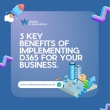As you consider your CRM options for 2025, you’ll find that Salesforce and Microsoft Dynamics 365 stand out as top contenders. Both platforms have evolved considerably, but they’ve taken different paths to meet the changing needs of businesses. You’re likely wondering which one will best suit your organization’s unique requirements. While both offer robust features, their approaches to user experience, customization, and integration vary greatly. Understanding these key differences will be essential in making an informed decision that aligns with your long-term business strategy. Let’s explore how these CRM giants stack up against each other in the coming years.
User Experience and Interface Design
Steering through the user experience landscape of Salesforce and Microsoft Dynamics 365 reveals stark contrasts in interface design.
You’ll find that Salesforce prioritizes a user-friendly approach, offering an intuitive interface that’s easy to navigate. This focus on simplicity reduces cognitive load, allowing your team to adapt quickly and become proficient in using the platform.
In contrast, Microsoft Dynamics 365 presents a more complex interface that might overwhelm new users, potentially hindering productivity during the onboarding process.
When it comes to customization options, both platforms offer flexibility. However, you’ll appreciate Salesforce’s drag-and-drop functionalities, which are particularly appealing if you lack technical skills.
Dynamics, on the other hand, may require more technical knowledge for extensive modifications. This difference in user experience considerably impacts CRM adoption and retention rates.
Salesforce’s streamlined interface has led to higher user satisfaction levels, while Dynamics 365 experiences varied feedback.
As you consider which platform to choose, remember that a user-friendly interface can greatly influence your team’s efficiency and overall satisfaction with the CRM system.
Customization and Flexibility Options
Three key factors distinguish Salesforce and Microsoft Dynamics 365 when it comes to customization and flexibility options.
First, Salesforce offers more user-friendly customization through drag-and-drop functionality, making it accessible to users without extensive technical skills. In contrast, Microsoft Dynamics 365 relies on Power Apps for low-code/no-code solutions, which can be less intuitive for non-technical users.
Second, Salesforce’s AppExchange provides a vast ecosystem of third-party apps, greatly expanding its customization capabilities. With over 3,400 apps available, you’ll likely find solutions tailored to your specific needs.
Microsoft Dynamics 365, while offering fewer third-party options, excels in customization within the Microsoft ecosystem, benefiting businesses already using Microsoft products.
Integration Capabilities and Ecosystems
While customization options are important, a CRM’s ability to integrate with other tools and its overall ecosystem can greatly impact its effectiveness. When comparing Salesforce and Microsoft Dynamics 365, you’ll find significant differences in their integration capabilities and ecosystems.
Salesforce boasts an impressive ecosystem with over 3,400 applications available on AppExchange, offering extensive third-party integrations that enhance its core functionalities. This vast marketplace allows you to customize and scale your CRM solutions more effectively.
In contrast, Microsoft Dynamics 365 provides around 1,000 integrations, primarily focused on Microsoft products. However, it integrates seamlessly with Microsoft Office tools and leverages Power Automate for enhanced workflow automation within the Microsoft ecosystem.
Both platforms support API availability for custom integrations, but Salesforce’s larger market share attracts more developer interest, resulting in superior integration options.
If you’re already embedded in Microsoft’s software suite, Dynamics 365’s integration with these tools can enhance your productivity. However, if you require flexibility with a wider range of third-party applications, Salesforce’s extensive integration capabilities may better suit your needs.
Consider your existing tech stack and future integration requirements when choosing between these CRM solutions.
Pricing Structures and Packages
When it comes to pricing, Salesforce and Microsoft Dynamics 365 take distinctly different approaches. Salesforce offers a tiered structure with plans ranging from $25 to $300 per user per month, catering to various business needs. Their Essentials plan starts at the lower end, while the Unlimited plan provides advanced features for established businesses.
In contrast, Microsoft Dynamics 365 adopts a more modular pricing structure, allowing you to select specific features. Customer service plans begin at $50 per month, and sales plans start at $65 per month.
You’ll find that Microsoft Dynamics 365 offers discounts for existing users, potentially saving $20 per user per month. This can be particularly attractive if you’re considering a long-term commitment.
Both platforms provide trial periods to test their services before making a decision. Salesforce offers a 30-day free trial, while Microsoft Dynamics 365 gives you a full month to explore their offerings.
When choosing between these CRM giants, consider your specific business requirements, budget constraints, and the scalability of each platform’s pricing structure. It’s essential to evaluate the features included in each plan to guarantee you’re getting the best value for your investment.
AI and Automation Features
Beyond pricing considerations, the AI and automation capabilities of Salesforce and Microsoft Dynamics 365 play a crucial role in modern CRM solutions. Salesforce’s Einstein platform offers predictive analytics and automated lead scoring, enhancing sales and marketing strategies. It’s designed to improve user experience by automating repetitive tasks, allowing teams to focus on strategic activities and customer relationships.
Additionally, organizations must adapt to a data-driven environment to fully leverage these technologies for operational excellence. Microsoft Dynamics 365, on the other hand, utilizes AI capabilities like Copilot to assist users in summarizing leads and providing contextual support, streamlining workflows and boosting productivity.
Both platforms leverage machine learning algorithms to analyze customer data and trends, enabling organizations to automate responses and tailor engagement strategies effectively. Salesforce’s AI-driven tools are particularly adept at personalizing customer interactions, while Microsoft Dynamics 365’s automation features use Power Automate to create custom workflows that connect various applications.
This considerably reduces manual processes and increases operational efficiency. As you evaluate these CRMs, consider how their AI and automation features align with your organization’s needs for customer insights, predictive analytics, and workflow optimization. The choice between Salesforce and Microsoft Dynamics 365 will largely depend on which platform’s AI capabilities best support your specific business processes and goals.
Training and Implementation Processes
Three key aspects differentiate Salesforce and Microsoft Dynamics 365 when it comes to training and implementation processes.
First, Salesforce’s TrailHead platform offers gamified learning paths, making it easier for users to adapt quickly to its features. In contrast, Microsoft Dynamics 365 typically requires more in-depth training due to its complex interface. This difference in user experience can greatly impact the onboarding period and overall learning curve for new users. Additionally, effective application support is vital for both platforms to guarantee a smooth shift and maximize user engagement.
Second, successful implementation of Salesforce often involves a dedicated team for customization and maintenance, while Microsoft Dynamics may incur additional costs for annual upgrades and technical support. This distinction can affect long-term resource allocation and budgeting for organizations.
Lastly, the user-friendly design of Salesforce generally allows for a shorter onboarding period compared to the more complex Dynamics 365 interface. However, both platforms necessitate a commitment to training to maximize their capabilities.
As you consider which CRM to adopt, it’s important to factor in these training and implementation differences, as they can greatly influence your team’s productivity and the overall success of your CRM integration.























